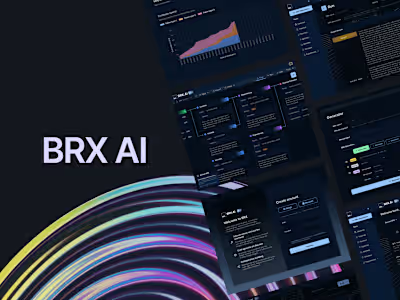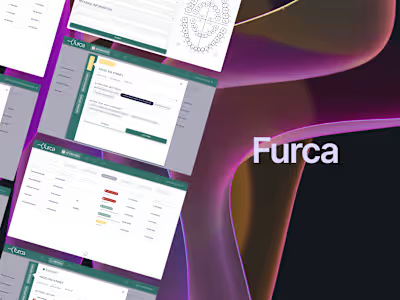Zoba: UI Design & Product Strategy
Introduction
In the fast-paced world of last-mile package delivery, optimizing operations is not just a goal but a necessity for companies striving to stay ahead. Returnmates, a leading player in the industry with a widespread network across the United States, grappled with a significant challenge: manual and unpredictable driver scheduling, a process that drained resources and hindered efficiency.
Enter Zoba, a dynamic startup specializing in data-driven solutions for urban mobility challenges. Zoba partnered with Returnmates to tackle the complexities of driver scheduling head-on. Recognizing the potential for innovation, Zoba enlisted my expertise to collaboratively develop a solution that would automate and optimize driver scheduling for Returnmates.
This case study delves into the collaborative journey between Zoba, Returnmates, and Serif Labs. From identifying the pain points of manual scheduling to the development and implementation of a transformative product, this partnership epitomizes the power of strategic collaboration and user-centered design in addressing real-world challenges. Through a blend of industry expertise, innovative thinking, and cutting-edge technology, Zoba and Serif Labs embarked on a mission to empower Returnmates with a solution poised to revolutionize last-mile logistics and drive sustainable growth in an ever-evolving market.
My Role
I was hired as a consultant and lead designer for Zoba’s team. The team had previously worked with a design agency that had delivered a design system. I integrated directly with the team, and worked closely with the head of product and the engineering team to develop product workflows, conduct user research studies, and design build-ready mocks.
Research and Discovery

UXR Study Plan
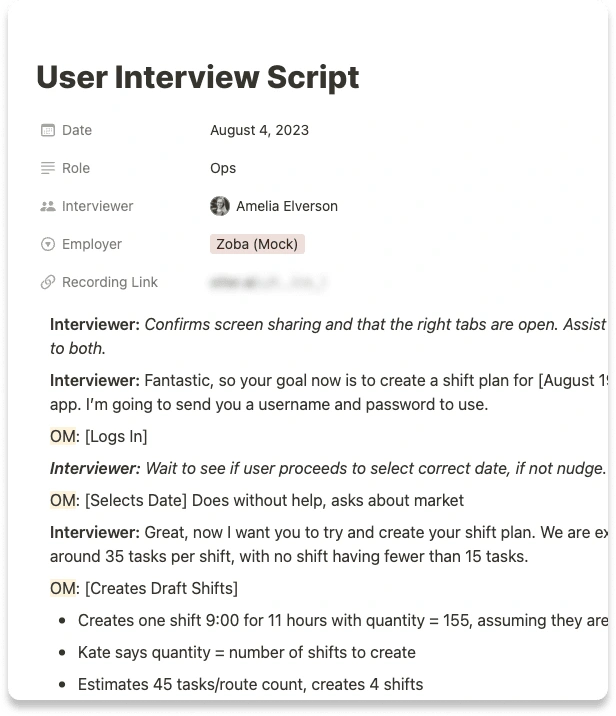
User Interview Script
I began an extensive research phase to gain a deep understanding of the challenges faced by Returnmantes in the last-mile package delivery landscape. This research encompassed various methodologies, including direct feedback collection from Returnmates' operations managers and immersive visits to Returnmates' warehouse facilities.
During these visits, the team delved into the intricacies of Returnmates' operations. The research uncovered critical insights into forecasting, route optimization, driver management, shift planning, alerts and insights, and warehouse management.
Notable challenges included:
Inaccurate demand forecasting due to variable package volumes and unreliable forecasts from merchants.
Dependency on manual processes and offshore teams for route optimization, resulting in inefficiencies and time-consuming tasks.
Complexities in driver management, including overstaffing to mitigate uncertainties and limited performance tracking mechanisms.
Issues in shift planning, such as reliance on historical data and manual communication for shift confirmations.
Opportunities for improvement in alerts and insights to streamline operational decision-making.
Warehouse management gaps, particularly in package tracking and system reliability.
By synthesizing these insights, we gained invaluable perspectives to inform the design and development of a tailored solution aimed at addressing Returnmates' pressing challenges in last-mile logistics.
Ideation and Prototyping
During the ideation and conceptualization phase, I leveraged design sprints and iterative low-fidelity prototyping to explore and refine solutions tailored to Returnmates' unique challenges in last-mile package delivery.
Challenge 1: Contextual information during scheduling
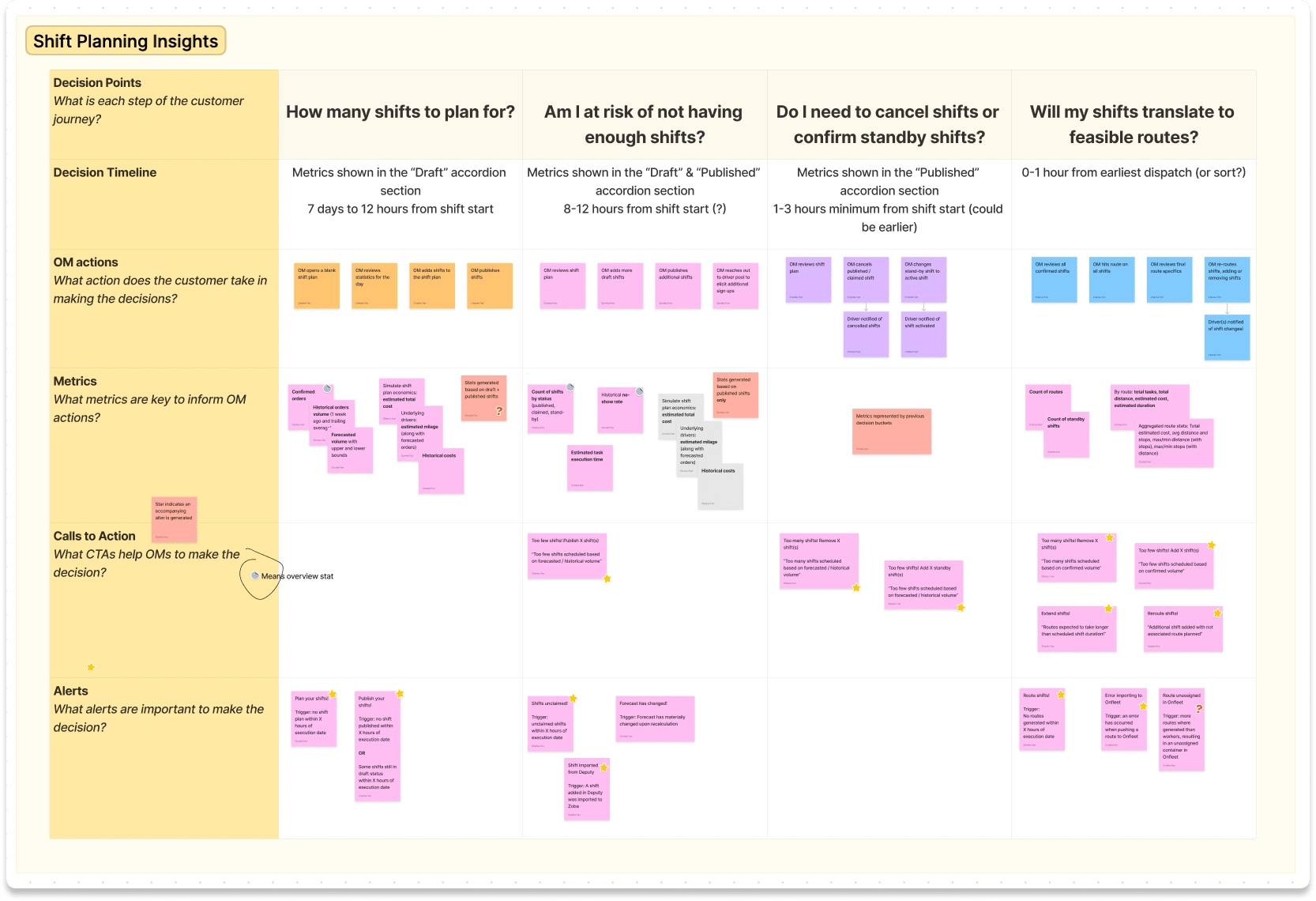
Understanding the user's experience through storyboarding

Version 1: Dashboard

Version 2: Dashboard as sidebar

Version 3: Lots of numbers
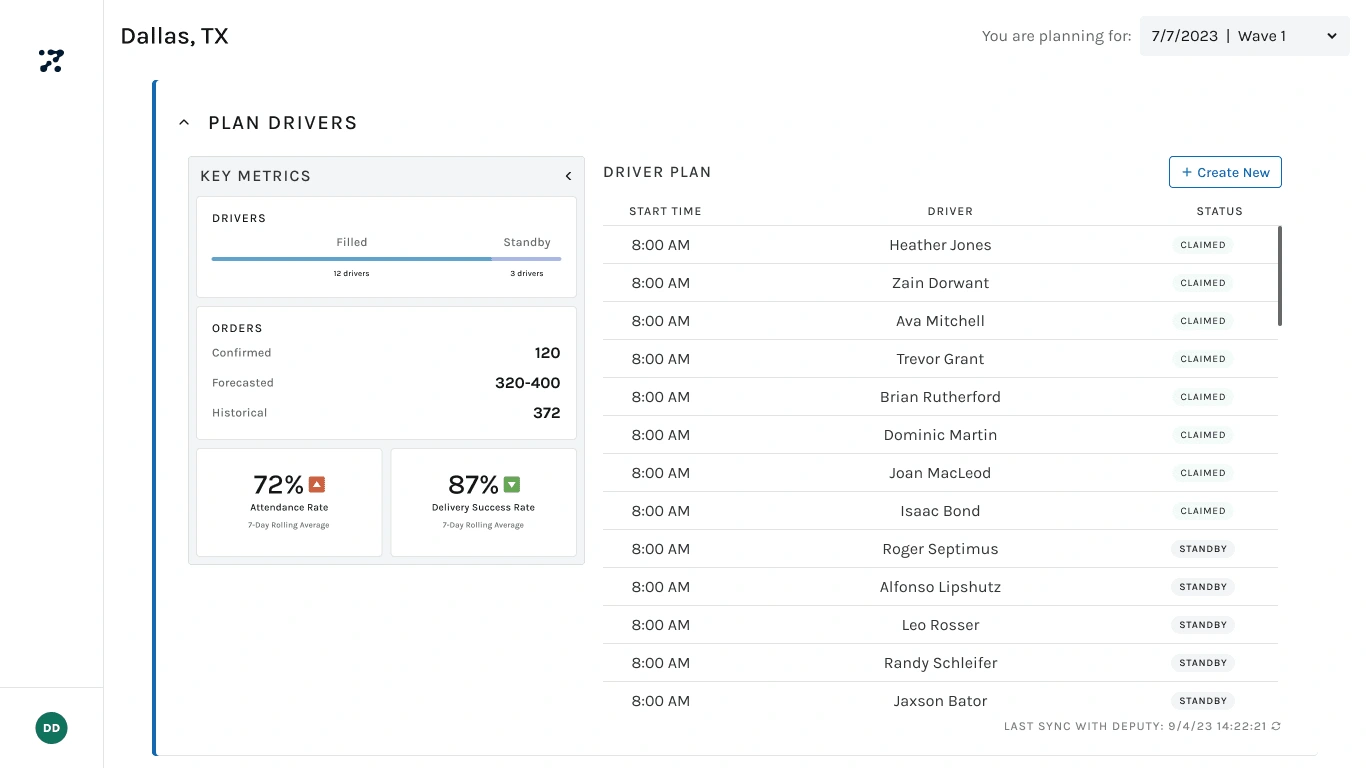
Final (MVP) Version: Goldilocks sidebar
One key area of focus was enhancing the user experience of the left-hand panel, where operations managers (OMs) typically accessed critical information related to order volumes, shift fill rates, attendance, and delivery success metrics.
Problem: Through collaborative workshops and user interviews, I identified the user's need to schedule shifts based on forecasted order volumes, current shift fill rates, and anticipated attendance. This information was spread across multiple tools, requiring a lot of context-switching for the user.
Opportunity: Recognizing the need to streamline information access and improve decision-making efficiency, the team collaborated closely with users to define product requirements and design a user-centric solution.
Solution: The team iterated on designs that grouped contextual information into a visually intuitive dashboard format, positioned strategically to the left of the scheduling table. By presenting relevant metrics and data points in a structured and accessible manner, the redesigned left-hand panel aimed to empower users with actionable insights at a glance.
Challenge 2: Adding automation
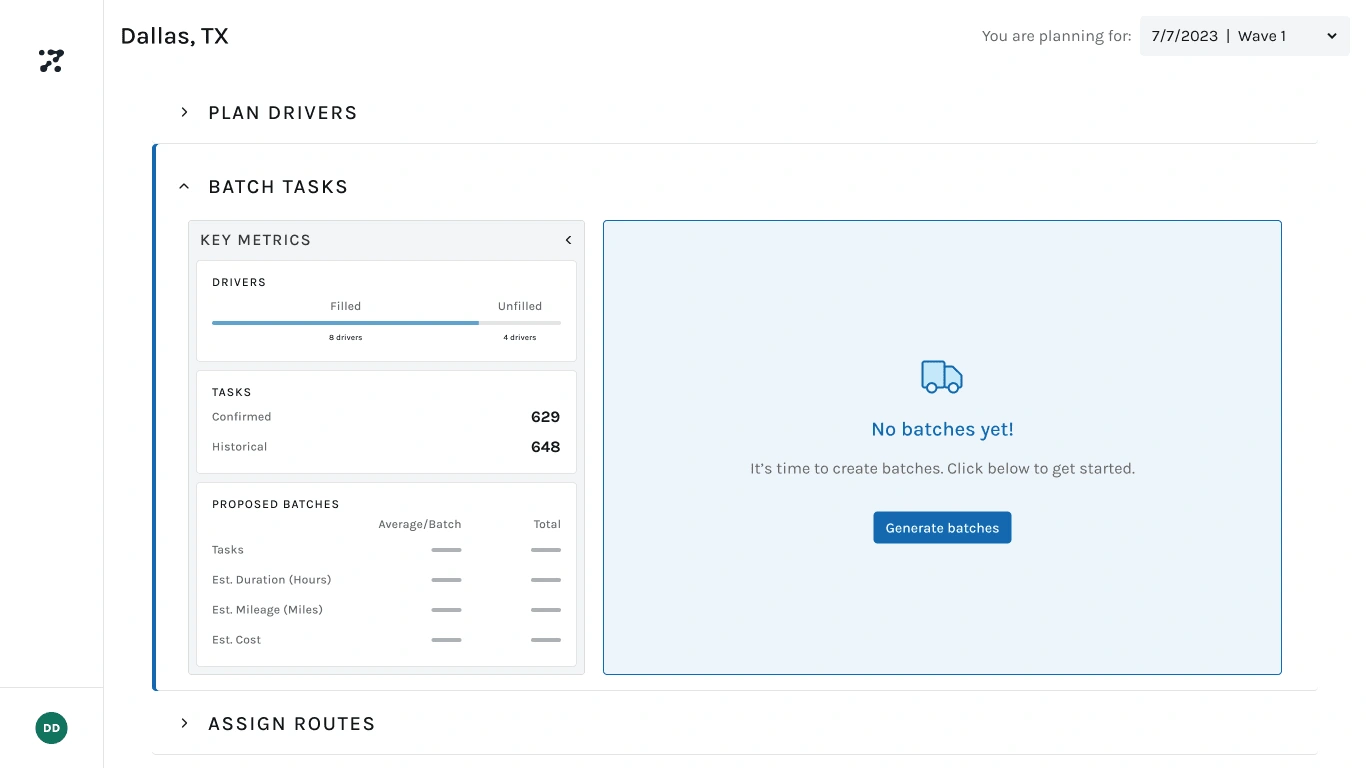
Step 1: The user chooses when to generate batches - the user has control when the software takes action.
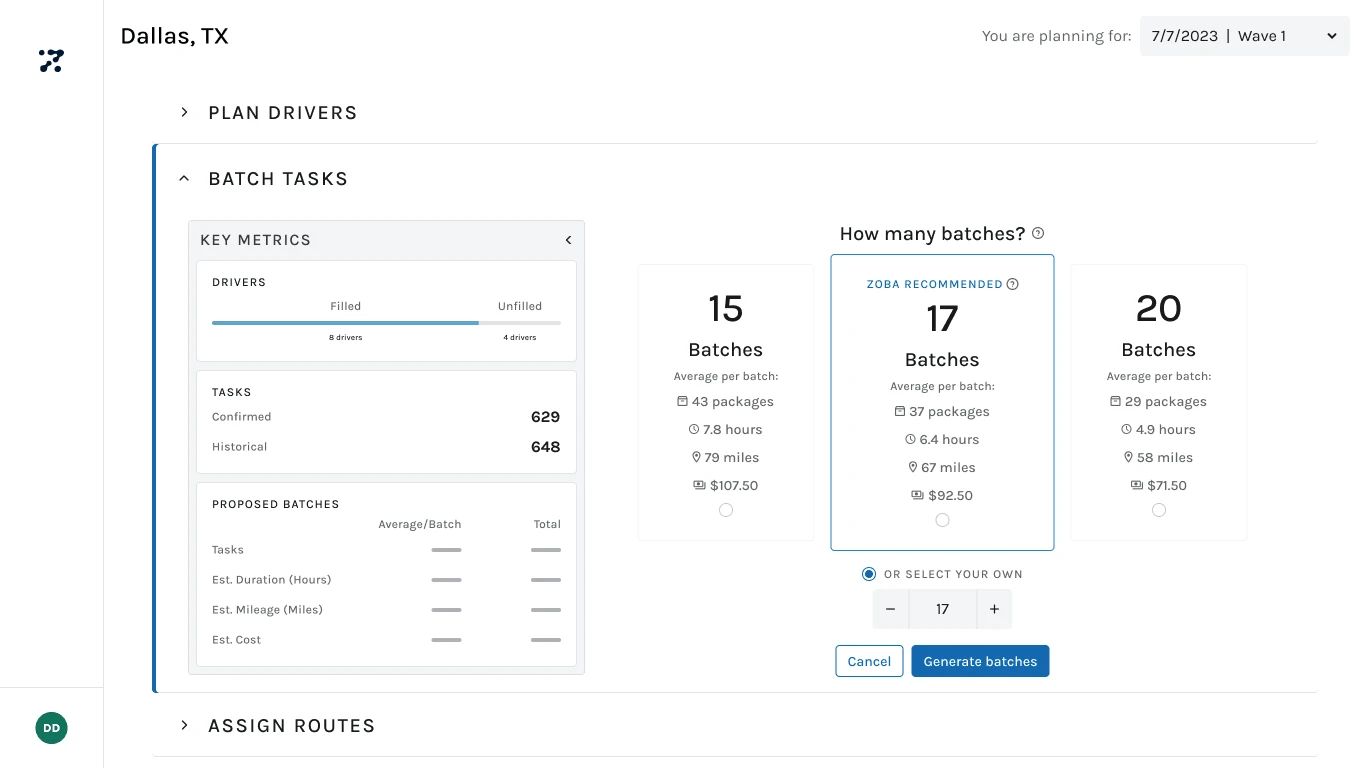
Step 2: The user has control over how many batches - this was the critical step. Zoba’s engine recommendation was highlighted, but the user maintained full control.
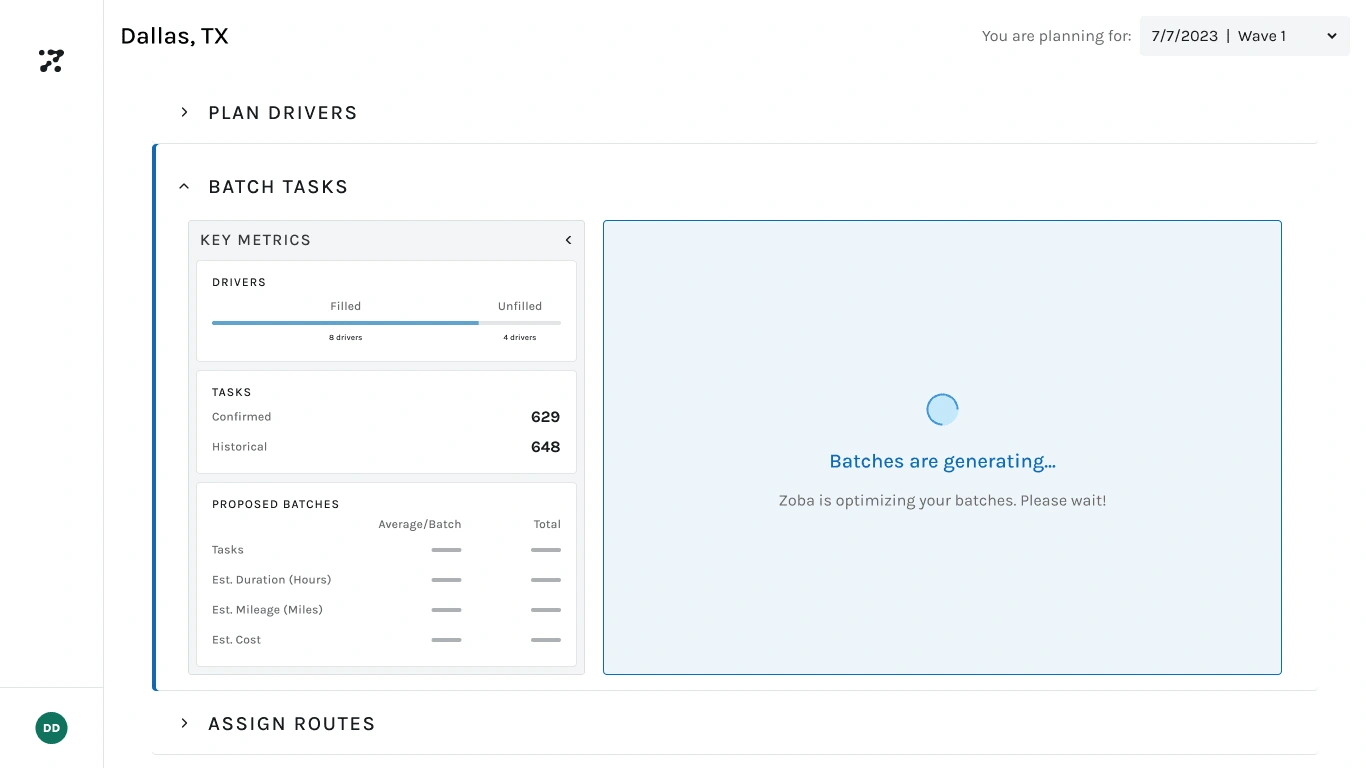
Step 3: Makes the time savings (and the value of Zoba) tangible by showing the “machine” working.
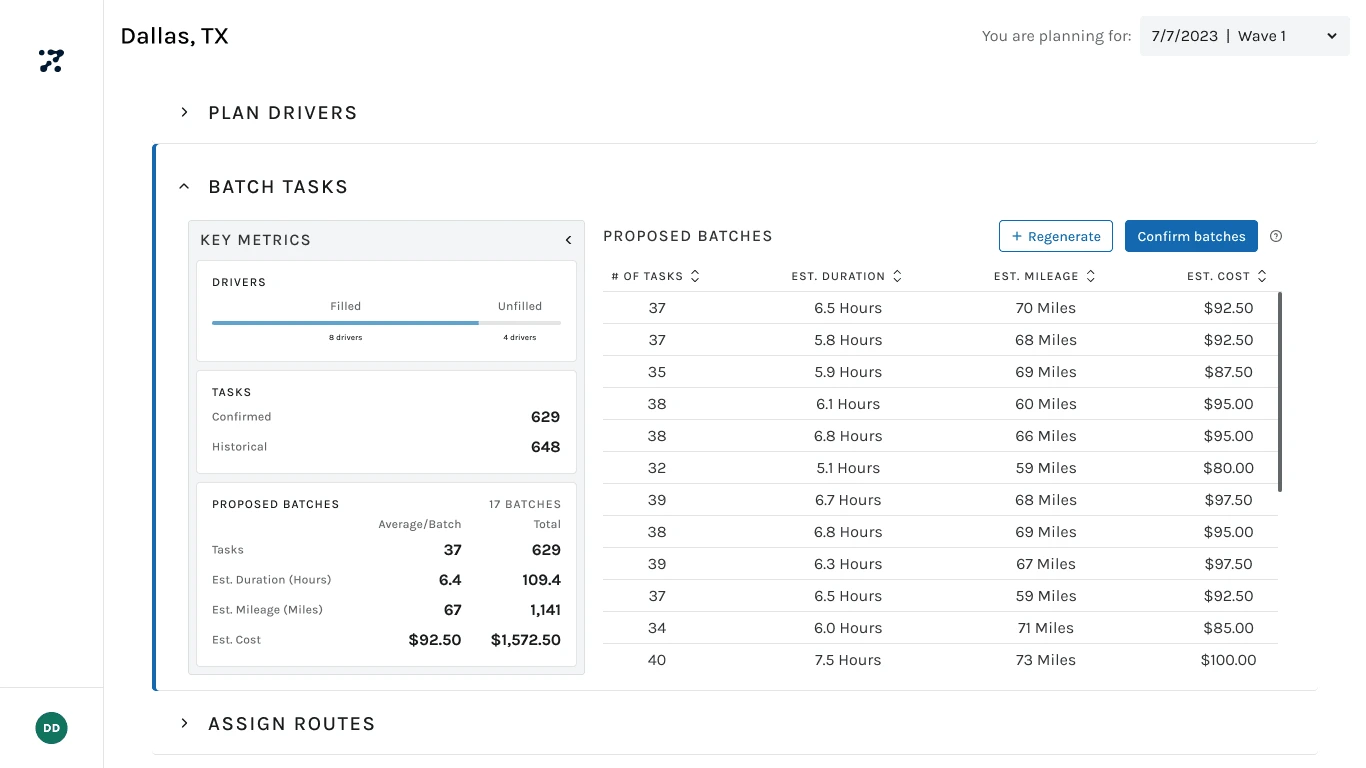
Step 4: Let the user “play” with the Zoba algorithm - allow the user to regenerate batches at will before confirming, giving them simulation powers they never had previously.
Another critical aspect of the conceptualization process revolved around introducing optimization and automation for route batch sizes while preserving user trust and minimizing operational disruptions.
Problem: The team identified the challenge of balancing optimization benefits with user acceptance and operational constraints. In a previous industry vertical, the Zoba team had experienced adoption hurdles due to fear or mistrust of AI. Zoba had built an incredible optimization engine - it needed to be introduced in a way that felt approachable and useful, not that it was there to take their jobs.
Opportunity: Various options, including manual, fully automatic, and hybrid approaches, were considered to mitigate risks and ensure user buy-in.
Solution: I opted for a three-option menu approach, offering users flexibility and control over batch size optimization. The design was realized as tiles within the interface, providing users with clear choices and transparent decision-making processes.
Implementation
Following the successful conceptualization of design solutions, I transitioned into the implementation phase, leveraging effective collaboration with engineers, efficient utilization of existing components, and proactive communication channels to ensure seamless execution of the project.
Design Communication and Documentation
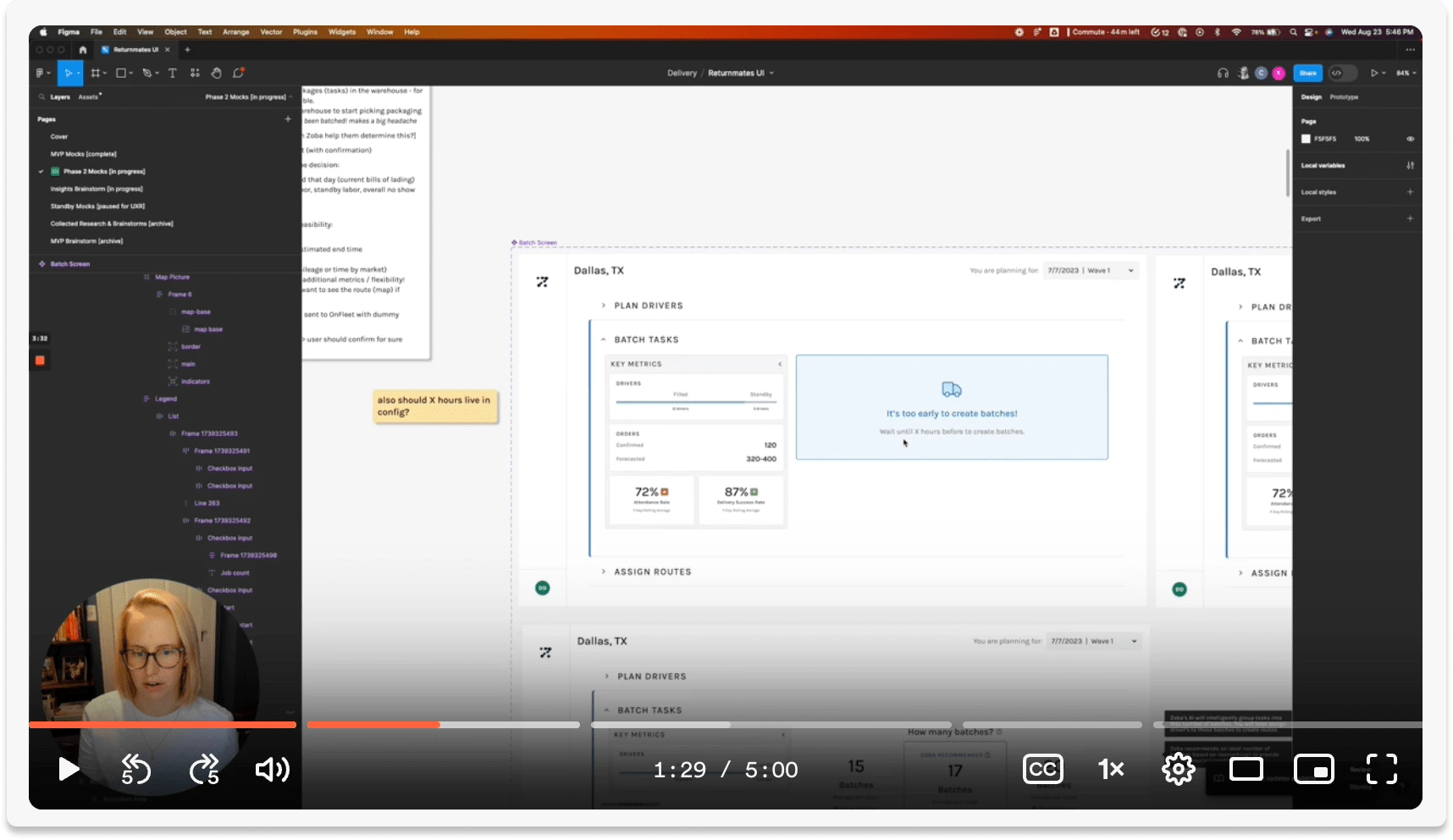
So many Looms - I love Loom videos to help with async communication and timezones! Much easier to talk through a visual design with video than try to translate to text 🙂
To facilitate smooth implementation, I adopted a proactive approach to design communication, utilizing Loom videos to articulate design changes and enhancements effectively. By providing comprehensive explanations and visual demonstrations, the team ensured clarity and alignment across stakeholders, enabling efficient decision-making and rapid progress.
Version Control and Design Archiving
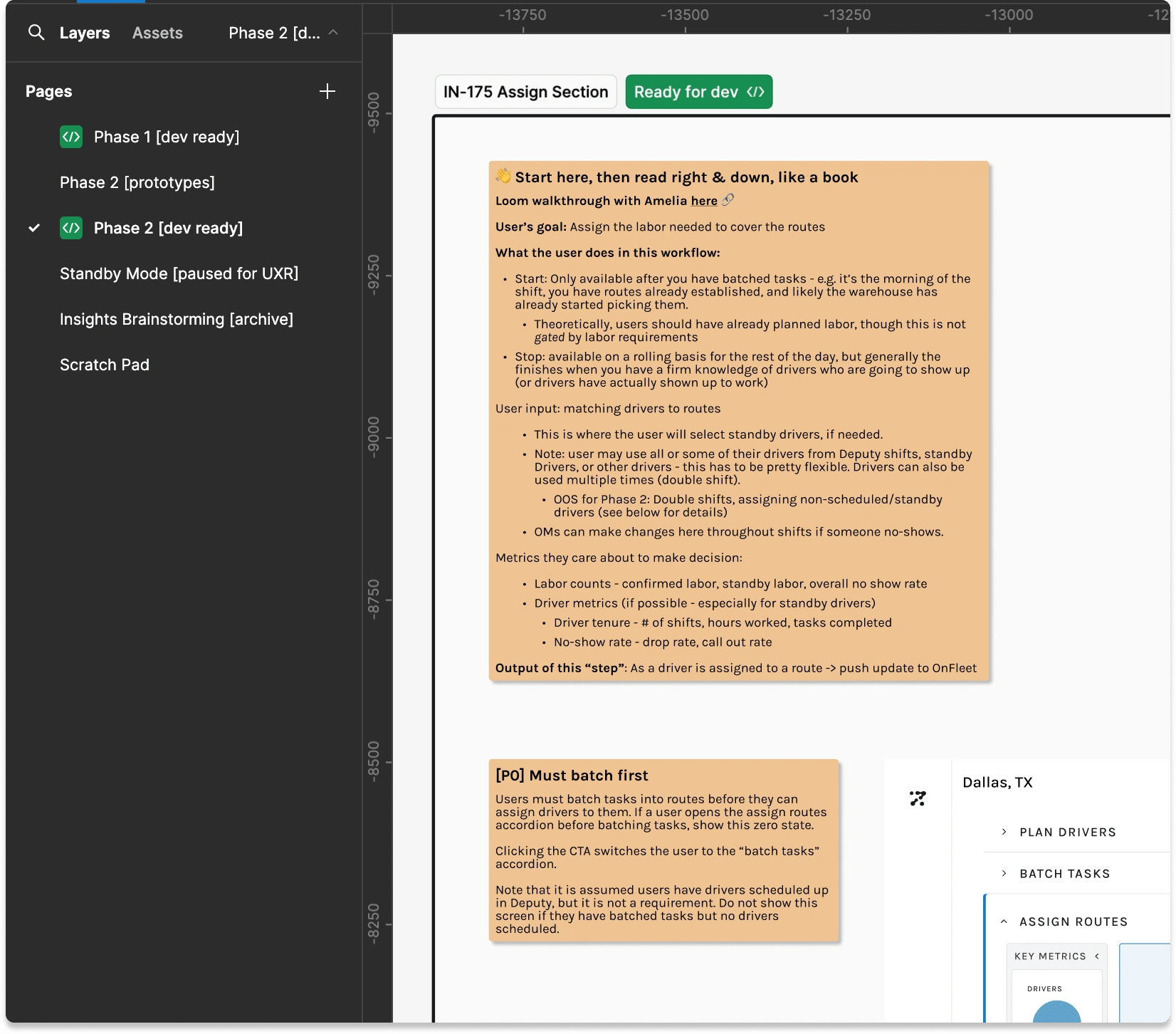
I keep my Figma files very (too?) organized. In the left panel - I’ve labeled the pages phase, and then added a status (dev ready, prototype, paused, archive, etc.). In the work panel on the right, the white “section” is tagged with a JIRA work number (IN-175). Each section has an intro note with appropriate docs linked, like walk-thru Looms, PRDs, etcs. Each mock is documented with UX requirements, and red-lined as needed.
I maintained meticulous version control practices, archiving designs that were discarded or deemed unnecessary for future reference. This approach enabled the team to track design iterations, revisit previous decisions, and maintain continuity throughout the implementation process.
Collaboration with Engineers
Close collaboration with engineers was integral to the implementation phase. I worked hand-in-hand to leverage existing components available in Storybook, minimizing the need to build custom component. By harnessing pre-existing design elements and components, the team optimized engineering resources, reduced development time, and ensured consistency across the product.
Identification of Future Enhancements
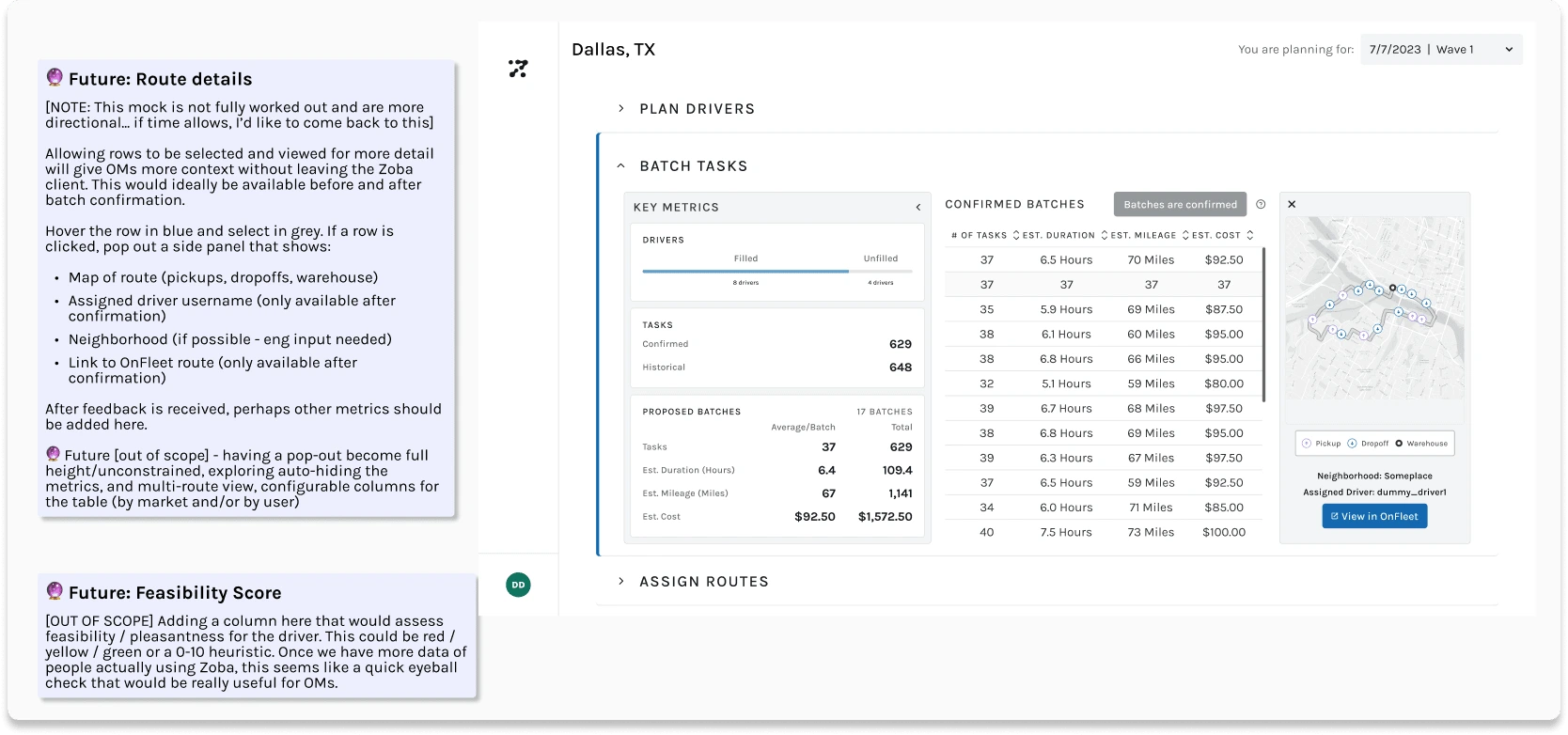
Product / UX backlog items
Throughout implementation, I keep my product strategy brain on in identifying design areas where future enhancements could further enhance the user experience. By delineating between immediate requirements and future opportunities for refinement, the team laid the groundwork for iterative improvements and ongoing optimization beyond the MVP launch.
My background as a product manager uniquely suits me for this type of role - I understand the need to think about the true MVP first launch, but also am always thinking about that long term grand picture. As a product designer, being able to stick to my guns on what is truly critical for a user today versus mark everything else as “someday” is one of my superpowers!
Results and Impact
After 3 months of iteration and building, the pilot launched in Returnmates' LA market. Results were exceptionally positive: The pilot achieved a remarkable 93% reduction in at-the-door cancellations, a key metric of poor staffing, signifying a substantial improvement in operational efficiency and driver satisfaction. The product’s UX design was incredibly well-received by users, with many commenting on its intuitive layout relative to their other tools.
As Zoba continues to iterate on the product and launches future enhancements, the goal remains to further automate and optimize last-mile logistics for Returnmates. This project showcases the power of user-centered design, strategic innovation, and seamless implementation in creating solutions that not only meet but exceed the expectations of stakeholders.
Like this project
Posted May 1, 2024
I worked closely with the head of product and the engineering team to develop product workflows, conduct user research studies, and design build-ready mocks.
Likes
0
Views
31
Clients

Zoba




